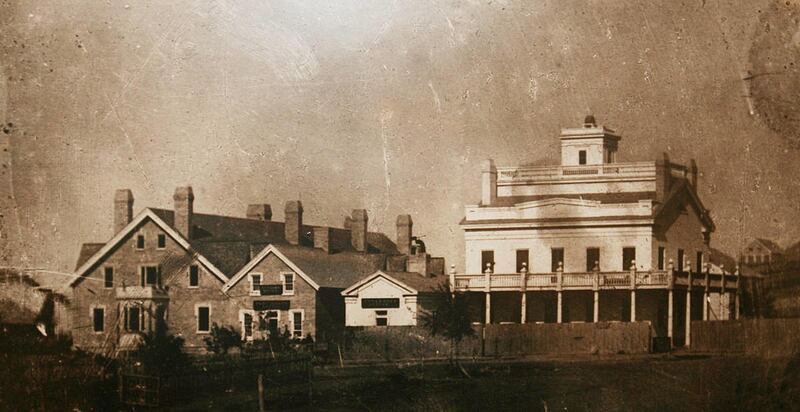At the corner of State Street and South Temple in downtown Salt Lake City, the historic Beehive House stands.
Three presidents of The Church of Jesus Christ of Latter-day Saints lived at this house, according to the church website. Brigham Young, Lorenzo Snow and Joseph F. Smith lived at the historic house. Truman Angell, architect of the Salt Lake Temple and St. George Utah Temple, designed the home, which was built in 1854.
The home gets its name from Utah’s affinity for the symbol of beehives.
Between a word for honeybee in the Book of Mormon and beehives symbolizing unity and hard work, Latter-day Saint pioneers resonated with the symbolism behind bees and beehives — which is why you can spot beehive symbolism in downtown Salt Lake City.
According to Utah Historical Markers, the Beehive House was named after the gilded beehive that adorned the roof of the home. It was built as a large home with a wrap-around porch. Intended as a residence for Young and his family, the home was also used for entertaining guests during Young’s tenure as governor.

Guests like Ralph Waldo Emerson, Mark Twain and President Ulysses S. Grant visited the property, per Utah Historical Markers. LDS Living said, “In one of the upstairs bedrooms of the Beehive House, Joseph F. Smith was pondering the scriptures and received the revelation for missionary work for the dead.”
Regarding the revelation, LDS Living cited 1 Peter 4:6, “For for this cause was the gospel preached also to them that are dead, that they might be judged according to men in the flesh, but live according to God in the spirit.”
After the home was used by Young and the two other church presidents, it was transformed in 1920 into housing for young women. “Most young women living in the Beehive House either worked at the Church Office Building or attended LDS University. This use continued into the late 1950s,” per Utah Historical Markers.
According to Intermountain Histories, the Young Ladies Mutual Improvement Society from the church was in charge of running the house for that purpose. In 1959, the church decided to restore the home and converted into what it is today — a museum on the historical registry.
The home had many unique features. LDS Living said that the Beehive House had a door specifically for cats. The artwork in the home featured cats as well. The house was styled after homes that Young had seen in New England — it was a mixture of Greek Revival and Victorian.
How to tour the Beehive House
Visit The Church of Jesus Christ of Latter-day Saints website for information on how you can tour the Beehive House.
Tours usually run around 30 minutes and specific hours are listed on the website. According to Church Newsroom, the Beehive House will close April 8 for renovations, which also include upgrades and renovations to the Lion House and Joseph Smith Memorial Building. “All three buildings are expected to reopen in 2025.”


